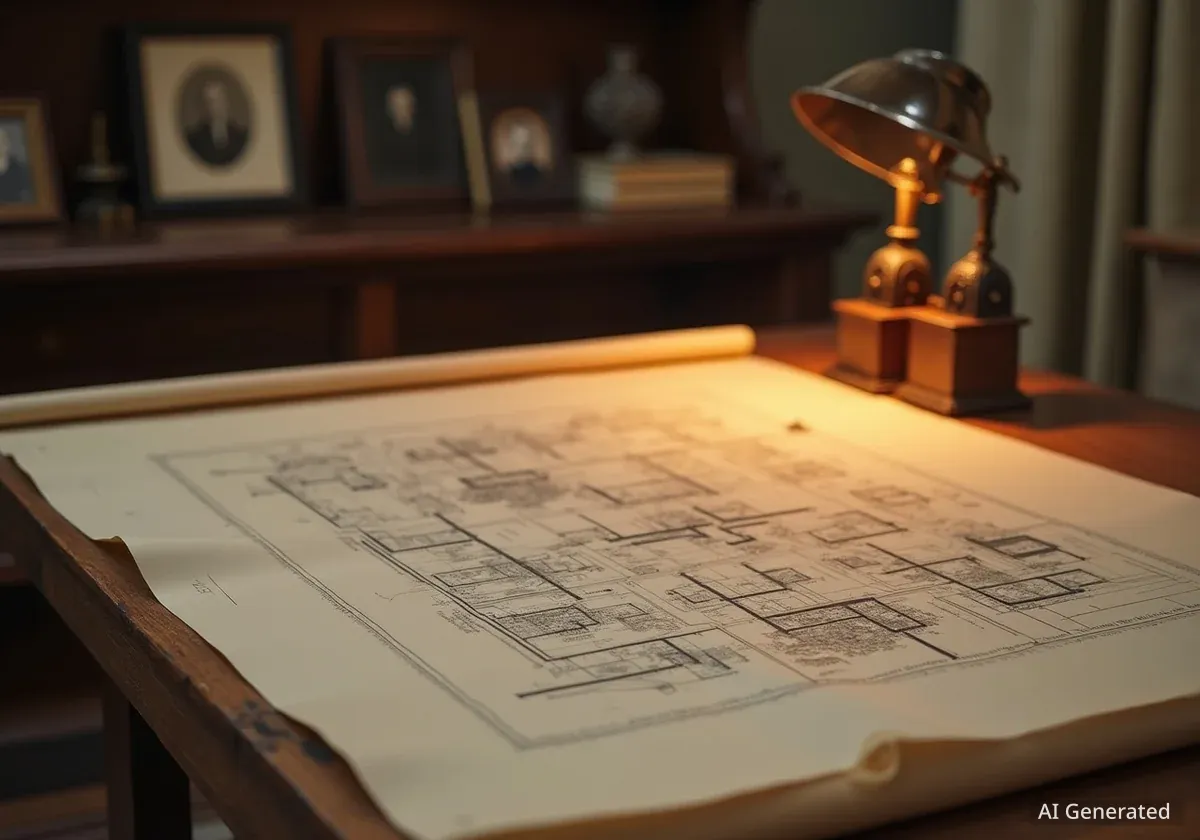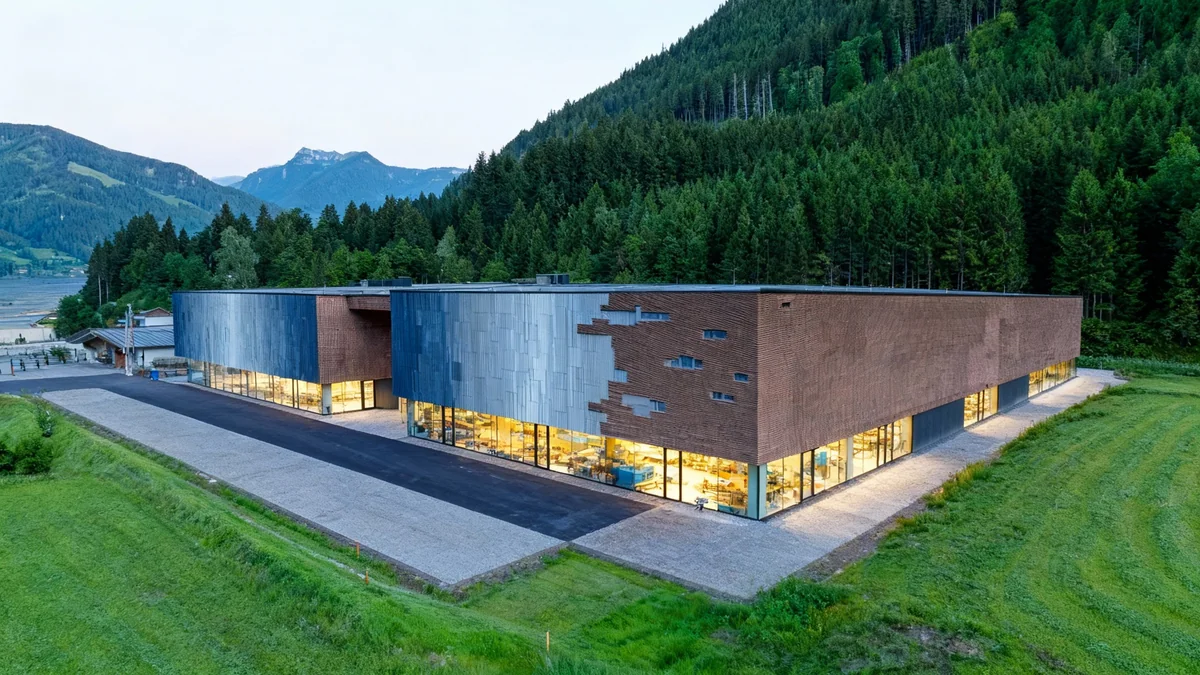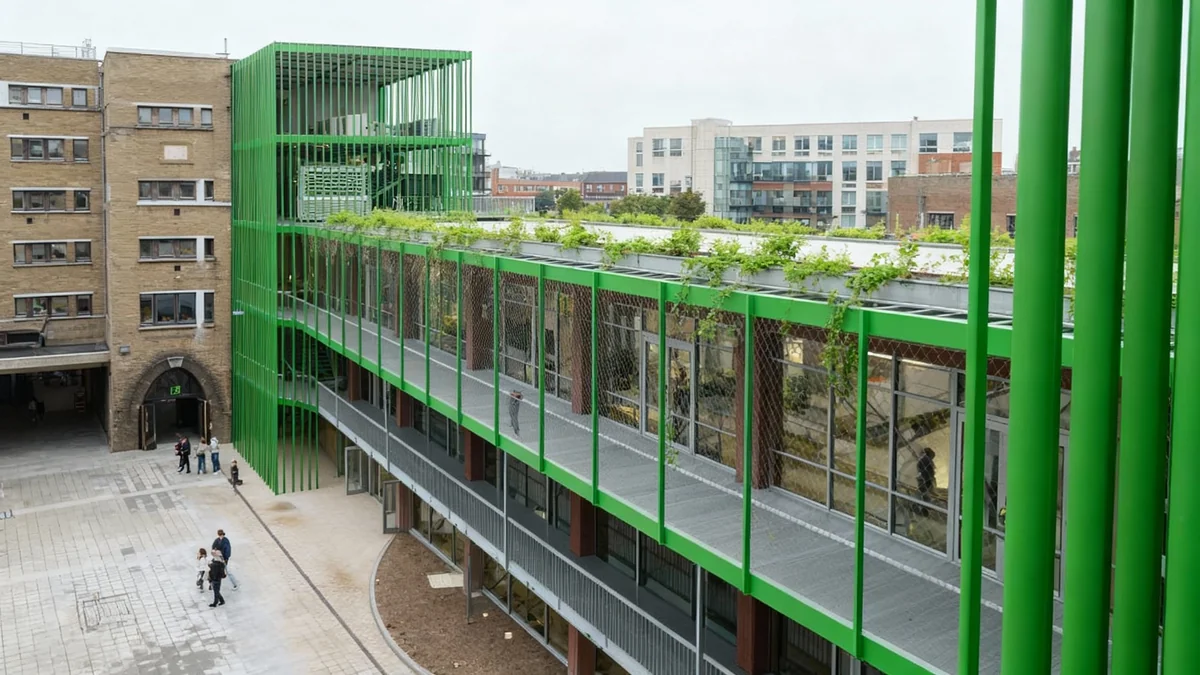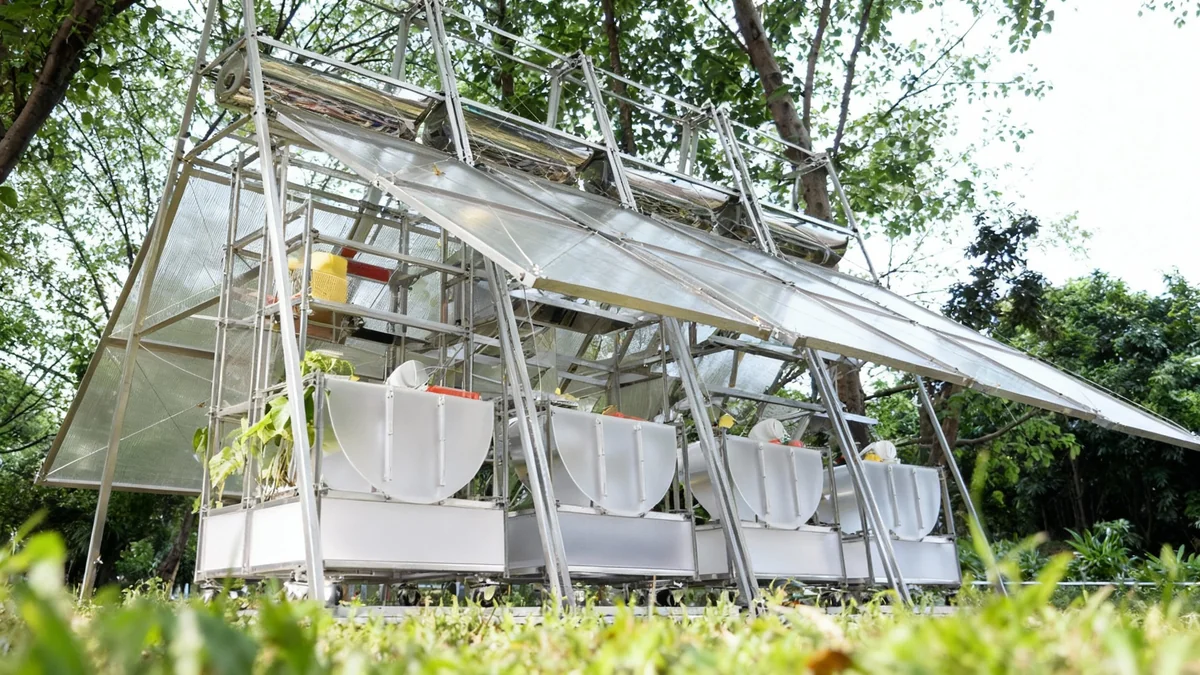Descendants of Reuben Harrison Hunt, a prominent architect known for designing many significant buildings in Chattanooga and across the South, recently shared personal memories and discovered new artifacts related to his life and work. These insights offer a rare glimpse into the man behind the historic structures, whose professional legacy continues to be debated, particularly concerning the proposed demolition of his Medical Arts Building.
Despite his widespread influence, details about Hunt's personal life have been less publicly documented than his architectural achievements. A recent discovery of family memorabilia in Nashville by his great-grandchildren now provides a more complete picture of his character and generosity.
Key Takeaways
- Reuben Harrison Hunt's great-grandchildren are sharing personal stories about the architect.
- The family discovered a collection of Hunt's personal items and professional materials.
- Hunt was known for his generosity, often designing churches for free and helping those in need during the Depression.
- Descendants are concerned about the preservation of his buildings, like the Medical Arts Building.
- His daughter, Louise Hunt Street, provided many of the personal anecdotes in a typed remembrance.
Reuben Harrison Hunt's Enduring Architectural Legacy
Reuben Harrison Hunt, born in 1862, became one of Chattanooga's most influential architects. His designs shaped the city's skyline and public spaces for decades. Notable Chattanooga structures attributed to Hunt include the Hamilton County Courthouse, the original City Hall, the Carnegie Library, and the Chattanooga School for the Arts and Sciences.
Beyond Chattanooga, Hunt's work extended throughout the Southern United States. His prolific career spanned until his death in 1937. His buildings are characterized by their durable construction and often elegant designs, reflecting the architectural styles popular in the early 20th century.
Architectural Significance
R.H. Hunt's work is considered vital to the architectural heritage of Chattanooga and other Southern cities. His designs often blended classical and Beaux-Arts influences, creating structures that were both functional and aesthetically pleasing. Many of his buildings are still in use today, a testament to their robust construction and timeless appeal.
Family Reflections and Preservation Efforts
Ed Street, one of Hunt's great-grandsons, expressed strong feelings about preserving his great-grandfather's work. "I hate to see history destroyed like that," Street stated. He highlighted the beauty of many of Hunt's buildings. "They are probably expensive to fix up, but if we tear everything down, there is not going to be any history left."
Street, along with his brothers Tom and David, recently met to share their limited but cherished memories of their great-grandfather. They are the children of Mary David Houston Street and Thomas G. Street Jr. Their grandmother, Louise Hunt Street, was Hunt's only child. She lived to be 103, passing away in 1998.
"I hate to see history destroyed like that. A lot of his buildings are very beautiful. They are probably expensive to fix up, but if we tear everything down, there is not going to be any history left."
— Ed Street, Great-Grandson of R.H. Hunt
The family's concern is particularly relevant given the ongoing discussion about the Medical Arts Building. This Hunt-designed structure is currently owned by First Presbyterian Church and is slated for demolition. Preservation advocates, now joined by at least one family member, are actively campaigning to save it.
Discovering Hidden Family Treasures
Initially, the great-grandchildren had few detailed stories or architectural plans from their great-grandfather. However, their perspective changed after Ed's wife, Pat Street, contacted Louise Reagan, a cousin in Murfreesboro. Reagan, a daughter of Louise Hunt Street's daughter Katie, possessed a box of Hunt family memorabilia.
Pat and Ed Street traveled to Nashville to meet with Louise Reagan and her brother, Alf Sharp, and his wife, Kathy. This meeting led to the discovery of a significant collection of items, providing new insights into R.H. Hunt's life and character. The items were later examined by a reporter at the Streets' home in North Red Bank.
Interesting Fact
- R.H. Hunt's only child, Louise Hunt Street, lived to be 103 years old. Her husband, Thomas G. Street Sr., was also an architect.
- The Hunt family collection included a large framed architectural rendering of the old Central Baptist Church on McCallie Avenue.
A Glimpse into Hunt's Character
The newly discovered items and family anecdotes paint a picture of R.H. Hunt as a generous and caring individual. Ed Street recounted stories passed down through the family. "He was a very nice man," Ed said he was told. "During the Depression, he would put food out on the back porch and leave it."
Another story highlights his charitable nature: he reportedly designed smaller church buildings for free or at a reduced cost. This detail was later corroborated by information found in the family's collection. His daughter, Louise, shared a childhood memory of their home on Oak Street. Hunt had converted a third-floor ballroom into a roller-skating rink for Louise and her friends, demonstrating his thoughtful and playful side.
Architectural Designs for His Family
R.H. Hunt also designed his own home at 37 S. Crest Road on Missionary Ridge. He later drew plans for a similar home for his daughter at 212 S. Crest Road. The family confirmed that both houses feature thick, fireproof walls, showcasing Hunt's commitment to safety and durability in his personal projects.
Family Background
R.H. Hunt was the eldest of nine siblings. His wife, Katherine, came from the DeGeorgis family, who operated a well-known confectionary store in downtown Chattanooga. Katherine's family originated from Sardinia.
Professional and Personal Connections
R.H. Hunt's youngest sibling, Ben F. Hunt, was also an architect. After R.H.'s death, a disagreement arose between Louise Hunt Street and her husband, Thomas G. Street Sr., and Ben regarding the use of the R.H. Hunt name in their architectural work. The two architects had dissolved their partnership in 1944.
The descendants found this family rift sad, especially knowing R.H. Hunt was widely regarded as a caring and Christian man. He was an active member and elder at First Baptist Church, and they believe he would not have approved of such a dispute.
Descendants' Careers and Continued Appreciation
None of the three great-grandchildren interviewed became architects. However, all three studied engineering at Georgia Tech, reflecting a shared aptitude for design and structure. David Street, a Chattanooga City High graduate, worked as a computer programmer for Texaco in Houston before retiring to Lookout Mountain.
Tom Street pursued electrical engineering before teaching community college math in Northwest Georgia. Ed Street, a McCallie graduate, worked as a chemist in Atlanta and later in Chattanooga for Chattem. He met his wife, Pat, a City High and UTC graduate, at a McCallie reunion.
Despite their different career paths, they hold deep appreciation for their great-grandfather. Tom Street noted, "Covenant College, which is just a half mile from our house, has got a plaque in their lobby with his name on it since he designed the main building on campus." This building is Carter Hall, originally the Lookout Mountain Hotel. David Street simply added, "I don’t know that much about my ancestors, but I do happen to know of my great-grandfather, the famous architect."
A Treasure Trove of Artifacts
The collection of materials provided by Louise Reagan proved to be invaluable. It included several photographs of Hunt at different stages of his life, some showing him with large sideburns, a popular style in the early 20th century. Personal items like a small notebook with his handwriting, a luggage tag, and pocket-sized books of Bible verses were also present.
Among the books given to him was one authored and autographed by Abby Crawford Milton, a notable local suffrage leader. However, the most significant discoveries were:
- A typed collection of memories from his daughter, Louise.
- Two old marketing catalogs featuring sketches of buildings and pricing.
- Approximately 15 thick cards with printed architectural renderings of his out-of-town buildings.
Churches Across the South
The architectural renderings of churches were particularly striking. These included:
- Polk Street Methodist in Amarillo, Texas
- McFarlin United Methodist in Norman, Oklahoma
- First Christian Church in Tampa's Hyde Park
- First United Methodist in downtown Dallas
- Austin Avenue Methodist in Denton, Texas
- First Baptist Church in Durham, North Carolina
- Central United Methodist in Knoxville, Tennessee
- First Presbyterian Church in Tuscaloosa, Alabama
Remarkably, all these churches are still standing today. Some have even adapted through denominational changes. For instance, the Polk Street and Austin Avenue churches have transitioned from United Methodist to Global Methodist and independent Methodist, respectively. The Dallas UMC church, while now surrounded by skyscrapers, maintains its architectural beauty in online photographs, as do other Hunt-designed churches.
Notable Connections
- Coach Paul "Bear" Bryant would take the Alabama football team to worship at the First Presbyterian Church in Tuscaloosa, a Hunt design, for "Squad Sunday."
- Hunt's daughter, Louise, noted that he "hated the first name of Reuben and preferred to be called R.H."
Other Significant Designs and Personal Insights
The family collection also contained a card with a sketch of the McFarlin Memorial Auditorium on the Southern Methodist University campus in Dallas. Hunt had an office in Dallas, and this auditorium shares a similar shape with Chattanooga's Memorial Auditorium, suggesting they are from the same era.
Other sketches included an expanded design for Chattanooga High, with more wings than were ever built, and a Monte Sano development for Huntsville that was never constructed. A printed card of the Leflore County Courthouse in Greenwood, Mississippi, is also part of the collection; this courthouse was the site of one of the Emmett Till hearings in 1955.
Photographs showed Hunt at various ages, including a picture of him at the St. Louis World's Fair in 1904, alongside his wife and daughter. A three-page typed remembrance by Louise, written when she was 86, offered deeply personal insights. She believed her father and uncles were named after Jacob's sons in the Old Testament and that R.H. became a Baptist due to an Anabaptist preacher in their ancestry.
Generosity and Final Years
Despite appearing to be largely self-taught, Hunt designed the former First Baptist Church sanctuary in Chattanooga, where he was a long-time member and elder. Louise's remembrance states he provided free plans for small churches across the South. "He was known for his generosity and kindness to those in trouble," she wrote, "and stories are told about the acceptance of many less than valuable items as payment for services, including swamp property in Florida."
Louise also shared details about her father's final year, noting he suffered physically and was bedridden. Doctors suspected arthritis, but other ailments may have been present. "The stark pictures that remain in my memory when I think of him make me very sad, because he was such a vibrant human being," she concluded.
The collection of artifacts and shared memories have given Ed and Pat Street a deeper appreciation for R.H. Hunt, both as an architect and a man. "He must have been the most generous person in the world," Pat Street said. "He was very spiritual, and with all these churches and schools [he designed], he probably felt like he was doing something for others."
Ed Street added his amazement at Hunt's achievements, particularly given his rumored eighth-grade education. "I am absolutely amazed at him. And he did a lot of things right because Grandma Street was a really wonderful person."




